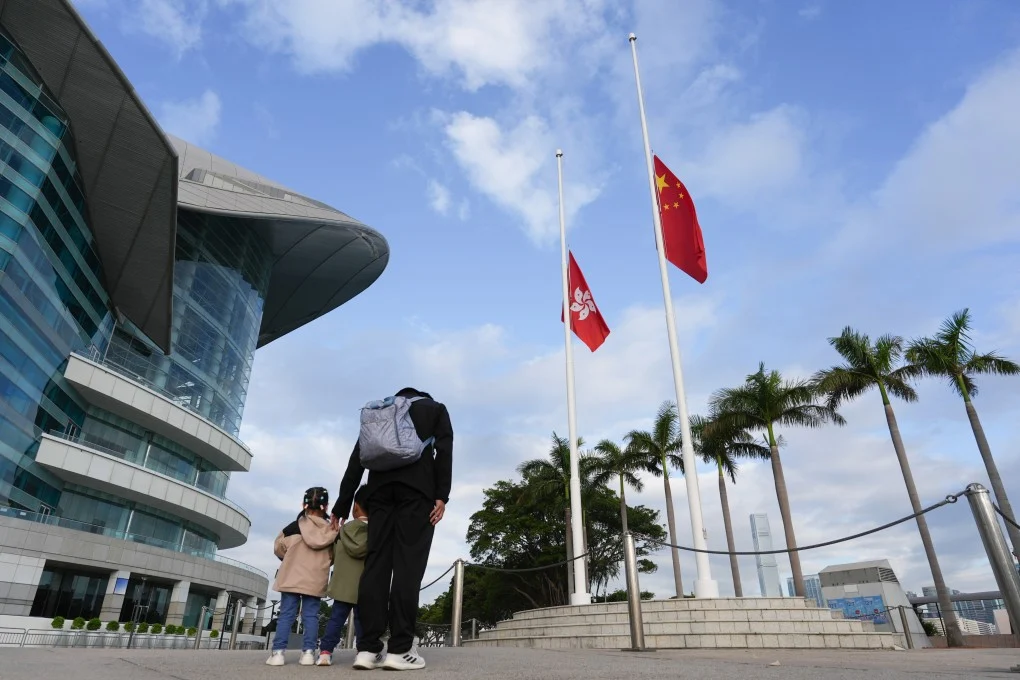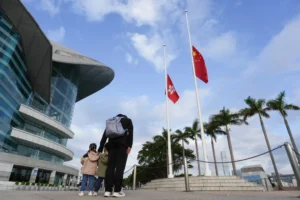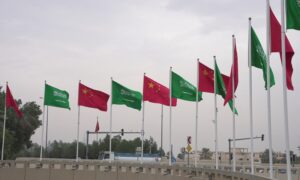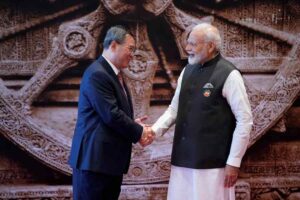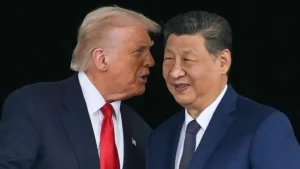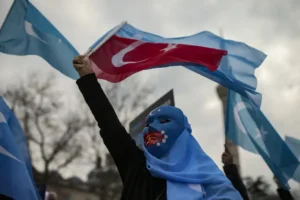The Sino-Indian Border: The Front Line of the Quad
The Quad, rather than a military alliance akin to NATO, has long marketed itself as a forum intent on encouraging greater cooperation between the four democratic member countries of Australia, India, Japan, and the United States. The most recent heads of government summit in May 2022, and its resulting joint statement, made this fact abundantly clear, detailing the many ways, aside from the military, in which the bloc of nations hoped to collaborate, from delivering COVID-19 vaccines to addressing climate concerns.
Yet, within such statements, it has become increasingly difficult to ignore the veiled messages directed toward China, particularly when discussing peace and stability in the Indo-Pacific. After all, disputed sovereignty of the Japanese-administered Senkaku/Diaoyu islands, countless points of contention along the 2,167-mile Sino-Indian border, Solomon Island’s closer alignment with Beijing rather than Canberra, and the U.S. role in the ever-escalating issue of Taiwan all firmly direct the individual attention of each Quad nation’s military toward China. Every one of these historic disputes or modern strategic concerns threatens the maintenance of the status quo and must be considered potential catalysts for future conflict.
Yet the most pressing of these disputes is Ladakh. Sandwiched between the world’s largest democracy and the world’s largest autocracy, the region to the north of India and southwest of China is rapidly becoming the front line of the Quad.
Much has been made of the impending threat of a Chinese invasion of Taiwan; however, the significant disparity in military capabilities and the uncertainty of what a U.S. response would look like leave one wondering just how much the small island could resist the People’s Liberation Army (PLA). Ladakh, on the other hand, is part of a Quad nation, demarcated only by a Line of Actual Control drawn in the wake of the sole conflict fought between India and China.
Diplomat Brief Weekly Newsletter N Get briefed on the story of the week, and developing stories to watch across the Asia-Pacific. Get the Newsletter
Global attention on the region has waned in the two years since the Galwan Valley incident; however, unprecedented mobilization and construction of military infrastructure on both sides of the border means that the possibility of yet another flare up remains high. A full-scale conflict in Ladakh would prove disastrous for regional and global security, and yet it is not as unfathomable as many may be led to believe.
Enjoying this article? Click here to subscribe for full access. Just $5 a month.
Ladakh’s importance to the Chinese Communist Party (CCP) rests in the practical and symbolic value that it holds to the regime. Following the 1962 war, nearly 15,000 square miles of Indian territory were seized and remain under Chinese control, in the form of Aksai Chin, yet the CCP remains determined to take more land west of China’s Tibetan Autonomous Region. These claims have further intensified since the advent of the China-Pakistan Economic Corridor in 2015, which sought to increase transportation and energy links between the two countries, as well as providing China with access to the Indian Ocean through infrastructure investment and unsustainable loans initially worth $46 billion.
With more of Ladakh under Chinese control, there is potential for more efficient connectivity to be established between Xinjiang and Islamabad than is already offered by the Northern Route highway, as well as allowing for the completion of the rumored G695 highway connecting Xinjiang and Tibet. Ironically, greater control of Ladakh would also offer the PLA access to 3,595 kilometers of recently constructed, all-weather border roads that can be utilized to garner direct access into India in the event of a full scale war.
Symbolically, Ladakh offers further reasons to inspire hostility between the two nations. The flight of the Dalai Lama to India, following the Tibetan uprising of 1959 against CCP occupation, is often cited as one of the many instigators of the 1962 war, and frequent visits by His Holiness to Ladakh are an infuriating reminder of India’s continued willingness to offer refuge to the spiritual leader. Not only would reasserting Chinese influence in Ladakh deal a further blow to the region’s Buddhist community, but reclaiming land that the CCP categorically claims would also allow China to continue along the trajectory mapped out by President Xi Jinping.
If the CCP wishes to be at the helm of the foremost superpower in the world by 2049 – the centenary of the People’s Republic of China – then resolving land disputes in a way that is beneficial to Beijing is of supreme importance. Denting the reputation and global stature of India – a regional adversary of China and ally of the United States – is an additional benefit that accompanies this path. India, on the other hand, is adamant that it will not cede even an inch of its land to China. This position, however, makes peace untenable for as long as China continues to deploy grey zone tactics on the border.
Beijing and New Delhi both hold different perceptions regarding the exact placement of the Line of Actual Control. Rather than a mutually agreed delineation, soldiers patrolling the border leave behind “empty cigarette packets, cans of food, [and] newspapers” to mark out what each side believes to be their own territory. As a result, intrusions and incursions are less an act of outright invasion, and instead are a subtle power play by the offending army. Whether voicing their displeasure at Indian foreign policy or hoping to coerce New Delhi into acting a certain way, the CCP opts for these careful prods as a means of reminding their southern neighbors of their power and presence.
In recent months, the success of this strategy for Beijing manifested in India’s initial silence on the issue of Taiwan, to avoid hindering the progress of bilateral border negotiations. However, such success was limited, and India would later voice its concern for Chinese “militarization of the Taiwan Strait.”
Fleeting success notwithstanding, the PLA remains poised on the border with clear intentions to advance incrementally into Indian territory. This land is crucial if Xi is to successfully enhance China’s rise and justify the return to borders he believes were defined during the Qing dynasty. Aggressive militarization in the region is just one means to this end.
In fact, the PLA’s other methods for expanding their control of the LAC are oftentimes far less sophisticated. Nomads that have for centuries traversed the mountainous frontier between the two nations have been weaponized by China and are sent first into Indian territory with the PLA following closely behind. This strategy of slow encroachment suits the CCP, which appears content to chip away at the LAC, while remaining just below the threshold of war and testing India’s stomach for territorial disputes. These actions are having a detrimental impact on the Indian nomad community, who, due to the creation of new buffer zones in response to Chinese advances, are now restricted from accessing land that they had used for generations. The result is the continuity of this prolonged period of uncertainty and tension, in which another serious incident could push the two nuclear powers even closer to war.
It is clear from such actions that the CCP is prepared for another conflict in the mountains. In the event of a response from the Indian army, the PLA has an abundance of military outposts, connected by newly constructed roads and bridges – such as that over Pangong Tso – through which they can resupply and sustain a drawn-out skirmish. For India, however, its biggest asset is the support of the Ladakhi people, who culturally share many similarities with Tibetans. Those fleeing Chinese occupation in 1959 settled in Ladakh, finding refuge in what came to be known as “little Tibet,” and bringing with them brutal stories of the repression and violence that they experienced at the hands of the CCP. As a result, Chinese soft power attempts to cultivate a pro-China sentiment in Ladakh, by blocking negative radio coverage, while simultaneously broadcasting their own stations, have, quite literally, fallen on deaf ears. That said, a lack of popular support for China in Ladakh will not be enough to defuse tensions on the border, nor will it discourage the CCP’s ambitions for the region.
The NATO alliance is underpinned by Article 5, requiring each nation to provide immediate military support in the event of an armed attack against any member. For the Quad, however, such a precondition does not exist, freeing Japan, Australia, and the U.S. from such an obligation should the PLA launch an invasion of India. However, with the threat of a Chinese invasion looming large over Taiwan, the four leaders will be acutely aware of the message that inaction would send their allies and adversaries alike. The U.S. is increasingly suggesting that it has abandoned the long-pursued policy of strategic ambiguity regarding Taiwan, and Biden appears prepared to engage in a military confrontation with China on the island, should one arise.
Enjoying this article? Click here to subscribe for full access. Just $5 a month.
Yet, for the Quad, war with China may be far closer to home than previously assumed. Since 2020, the CCP has continued to mobilize its forces along the LAC, refusing to be deterred by India’s ever-growing alignment with the U.S., which will culminate in a joint India-U.S. military exercise this October. In fact, continued border violations in spite of the Quad’s growing importance suggests that not only does the CCP doubt the military significance of the alliance, but that they are using such incendiary actions as a means of testing the U.S. – and the other Quad nations’ – response to their aggression, in advance of any decision to forcefully “reunify” Taiwan.
In the nearly two-and-a-half years since the Galwan Valley incident took place, Ladakh remains a front line, not just for India, but for the Quad too. Joint statements by the Quad of strong support for the sovereignty and territorial integrity of all states may be insufficient to prevent another, far deadlier clash occurring down the road.

